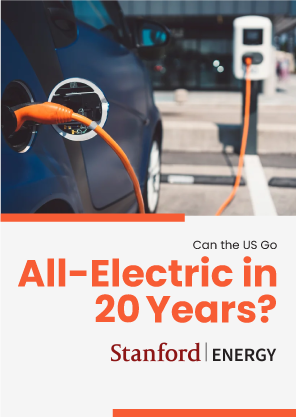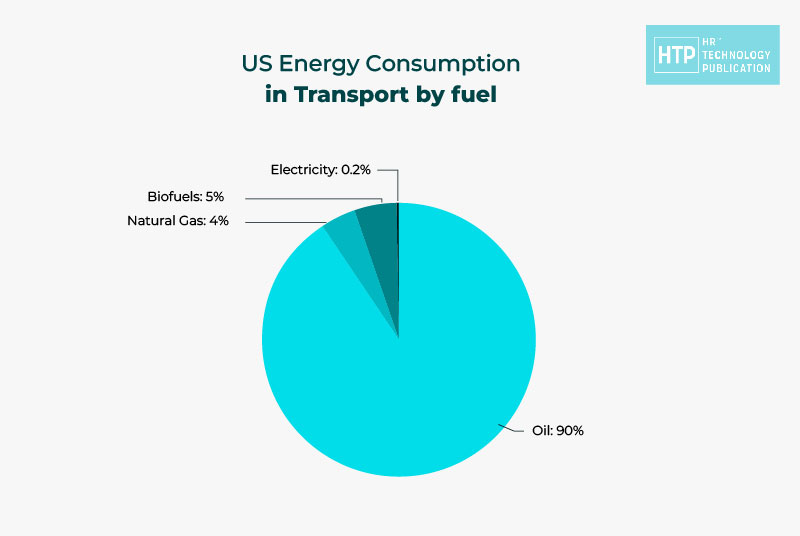or call: +1 (845) 347-8894

or call: +1 (845) 347-8894
or call: +1 (845) 347-8894

The US is the leading market for electric vehicles. The rumble of internal combustion engines has been the soundtrack of American transportation for over a century. But, with concerns about climate change and oil dependence rising, a question is electrifying the auto industry: Can the United States transition entirely to electric vehicles (EVs) in the next two decades?
Currently, gasoline reigns supreme. Over 90% of vehicles on US roads are powered by fossil fuels. This translates to a vast network of gas stations and a well-oiled (pun intended) infrastructure catering to our gas-guzzling habits. However, the tide is turning. Public awareness about emissions and government incentives are fueling consumer interest in EVs. The government has implemented various incentives, such as tax credits, rebates, and subsidies, to encourage EV adoption. States like California are leading the charge with ambitious mandates to phase out internal combustion engines by 2035, adding momentum to the electric revolution.

While EVs are the frontrunners, other alternative fuels are vying for a spot. Compressed natural gas (CNG) offers a cleaner burning option, but limited infrastructure hinders widespread adoption. Hydrogen fuel cell vehicles (FCVs) hold promise, but the technology remains nascent. Biofuels derived from plant-based sources offer a sustainable approach, but concerns about land use and production efficiency persist. Each of these alternatives presents unique challenges and opportunities:
Despite these contenders, EVs are surging ahead. Advancements in battery technology have addressed range anxiety, a major consumer concern. Modern EVs can now travel over 300 miles on a single charge, making them competitive with traditional vehicles. Tesla’s dominance has spurred competition, with established automakers like Ford, General Motors, and Volkswagen investing heavily in EV development. The charging infrastructure is also expanding rapidly, with companies like ChargePoint, Electrify America, and Tesla building networks of fast-charging stations along major highways.
Moreover, the price of lithium-ion batteries, a key component of EVs, has dropped significantly over the past decade. This cost reduction has made EVs more affordable and accessible to a broader range of consumers. Battery recycling technologies are also improving, addressing concerns about the environmental impact of battery disposal.
A full-scale EV transition presents significant challenges. Upfront costs remain higher for EVs compared to gasoline vehicles, though this gap is narrowing. Building a robust, nationwide charging network will require significant investment, especially in rural areas. Additionally, the electric grid needs an overhaul to handle the increased demand for electricity. These challenges include:
While the total cost of ownership for EVs is often lower due to reduced fuel and maintenance expenses, the initial purchase price can be a barrier for many consumers.
Rural and underserved areas lack the charging infrastructure necessary to support widespread EV adoption. Investments in public charging stations and incentives for home chargers are crucial.
The current electrical grid may struggle to meet the increased demand from millions of EVs charging simultaneously. Upgrades to grid infrastructure and integration of smart grid technologies will be essential.
The shift to EVs will extend far beyond the personal garage. Jobs in the oil and gas industry could be affected, necessitating workforce retraining programs. The power grid has to adapt to integrate renewable energy sources like solar and wind to power EVs cleanly. The automotive industry will also undergo significant changes, with new manufacturing processes, supply chains, and technologies emerging.
The transition to EVs could displace workers in traditional automotive and fossil fuel industries. Retraining programs and education initiatives will be essential to help these workers transition to new roles in the EV and renewable energy sectors.
To maximize the environmental benefits of EVs, the electricity used to charge them must come from renewable sources. Expanding solar, wind and other renewable energy projects will be crucial to ensure a clean energy supply.
The production of EVs requires different components and materials than traditional vehicles. This shift will impact supply chains and manufacturing processes, leading to new opportunities and challenges for the industry.
Government policies and regulations will play a critical role in driving the transition to EVs. Federal and state governments can implement measures to encourage EV adoption, such as:
Continued financial incentives for EV buyers, including tax credits and rebates, will help make EVs more affordable.
Stricter emissions standards for vehicles can accelerate the phase-out of internal combustion engines and promote the adoption of cleaner alternatives.
Government funding for charging infrastructure and grid upgrades will be essential to support the growing number of EVs on the road.
Investment in research and development for battery technology, renewable energy integration, and other key areas will drive innovation and help overcome existing barriers.
A complete transition to EVs in 20 years is an ambitious goal. However, the rapid pace of technological advancements and growing consumer interest suggest it’s not out of reach. Overcoming infrastructure hurdles, ensuring affordability, and investing in a clean energy grid are crucial steps. The journey to a fully electric future will be a charged one, but the potential benefits for the environment and energy independence make it a road worth traveling.
As the US navigates this transition, collaboration between government, industry, and consumers will be vital. By working together, we can build a sustainable transportation system that reduces emissions, enhances energy security, and creates new economic opportunities. The electric revolution is not just about changing the vehicles we drive; it’s about reimagining the future of mobility and ensuring a healthier planet for generations to come.
